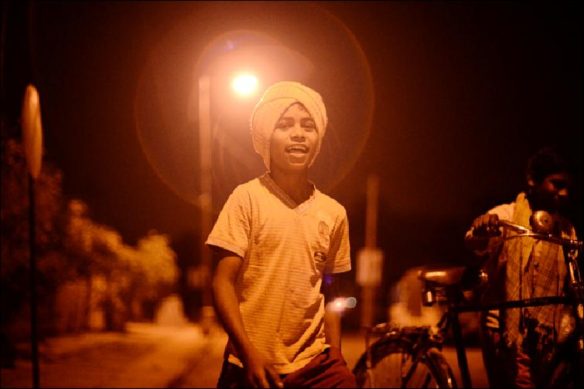Child Labour Hatao or Child Labour Chupao ?
Posted on May 04, 2015
Twenty five years ago, April 30th, the day before Labour Day, was chosen by Bhima Sangha, a union of working children, as Child Labour Day – a day to draw attention to themselves and their concerns. This was adopted by many working children’s unions in India. In 1996, the International Movement of Working Children at their first International Meeting in Kundapura adopted the “Kundapur Declaration” jointly drafted by working children from 33 countries. At that meeting, working children and adolescents from three continents demanded of States and International Agencies that they be consulted, their initiatives recognised and their products not boycotted; that their work be respected and made safe; that they have access to appropriate education, professional training and quality health care; that poverty be addressed aggressively and that rural development to stem rural urban migration be made a priority; and most of all, to put a stop to the exploitation of their labour.In 2006, the International Movement of Working Children, at their Third World Meeting in Siena (Italy), decided on December 9th as the International Working Children’s Day to commemorate the Kundapur Declaration and to highlight its issues every year.Ironically, National and International Agencies working on child labour have declared an ‘Anti Child Labour Day’ highlighting their objective to eradicate child labour through ‘raid and rescue’ operations that have now become standard operating procedure for the whole spectrum of child work from the intolerable to the enabling. Working children ask; “Do they want to eradicate us like pests using pesticide, are we not human beings with rights deserving respect?”
We remember how before the Commonwealth Games in 2010, barricades were erected along the roads to the Games to hide our poor from the world and nearly 400,000 people from slums in Delhi were ‘relocated’. It was said that such indiscriminate evictions without proper resettlement had not been experienced since the Emergency and spending billions of dollars on ‘building national pride’ was a shame when India really required massive investment in social development programs.
Working children have and continue to be subjected to similar approaches for similar reasons. Thirty five years after the Child Labour Act, the ‘raid and rescue’ strategy has only resulted in sweeping the problem under the carpet and hiding working children from view. They are rounded-up like stray dogs and locked away in State Homes till they are 18 and unfit for anything.
Instead of conceding to the working children’s demand for rural development and poverty eradication through the development of agriculture and employment generation, we have perpetuated poverty with the sops we meet out in the form of one rupee rice and BPL Cards.
Instead of providing quality and appropriate education, we promote an education that is tailor made to feed Corporate India churning out mindless young men and women totally cut off from their roots and inept for the hundreds of other occupations this country needs while also robbing these occupations of their dignity.
We always seem to bite the wrong end of the stick. When inclusive development should be our priority we focus on a phoney face lift, but then the nature of State has change from a humanitarian one to a pro Corporate one focused on GDP and the stock market. So instead of ‘Garibhi Hatao’ we go in for ‘Garibhi Chupao’.
When one in three Indians lives below the poverty line and 40% of the hungry live in India, when 46% of India’s children and 55% of women are malnourished, legislation has to be enabling. We know from historical experience that legislation cannot be enforced without a dramatic change in the reality of people’s lives. They have to experience development that is beneficial to them and improves their circumstances. ‘Compulsion’, the current weapon of choice, only brings about a feigned and synthetic sense of success, a device that Gandhi abhorred. So the proposed Child Labour Bill that will extend the ban that now applies to children below 14 years to cover all children below 18, will not change anything.
While the absolute numbers of child labourers are growing, policy makers are reluctant to admit their failure though every labour inspector and child welfare officer in this country knows that the fate of almost every child they have rescued is worse because of their intervention.
The proponents of the total ban persist in their simplistic equations and draconian strategies, the children who are victimised by it are written off as collateral damage.
Manju, a working child once used a metaphor to describe India’s policy on child labour. He said that we were like a pot of boiling rice and our policies for child labour just kept scooping the froth from the top. What we needed to do, he said was “to remove the fire beneath”.
We are experiencing an artificial calm, a fearful silence that conceals all our ills. It is a dam ready to burst and when it does the pot will boil over.
#childlabour #raidandrescue #chotukahanhai #workingchildren #childlabourday



[…] – Child Labour Hatao or Child Labour Chupao? (CWC Newsletter, April 2015) […]